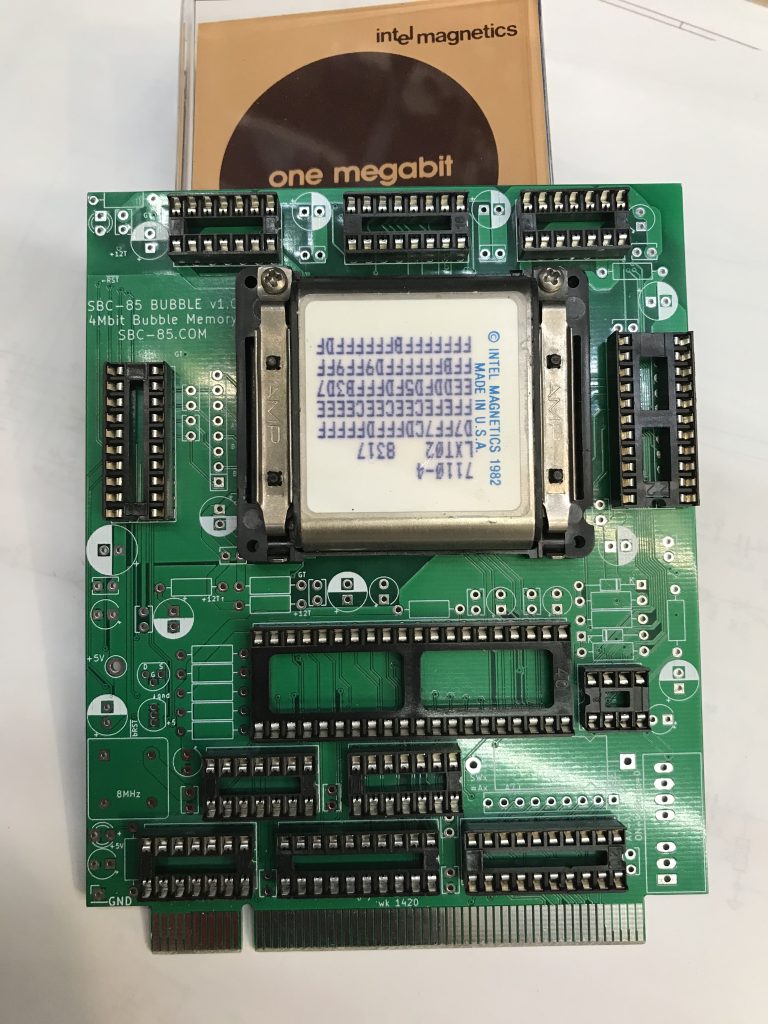- Craig Andrews
- Category Magnetic Bubble Memory
As an undergraduate I was in a very small department where the students were very closely knit with the professors. Late afternoon on Friday was the department’s beer and popcorn day at the local bar where one day a professor mentioned this new technology that was in the works at Intel called Magnetic Bubble Memory. The name alone was exotic enough to pique my interest and over the months we followed up with big plans to get one of these fantastical devices from Intel and build something…. anything…. just to get involved and utilize this futuristic form of memory. A year or two passed, we never got a bubble device, I graduated, and so much for our great bubble memory plans. Several years later, the bubble memory ‘bubble’ popped and even more quickly than it came bubble memory was a thing of the past.
Well, no time like the present to finish our project. Years ago I happened across an old Intel BPK-72 and since have stockpiled a number of bubble memory devices, so now is time to get going and build a bubble memory card for the SBC-85.
A few days ago I received my bubble cards in my latest order from the PCB house and (between finishing the documentation on the bus monitor supreme v1.1b system) have started populating components. Hopefully this week I will at least get the board up and talking with a dummy module installed. Circuit wise, the card is far from the most complicated but experience wise I am a complete novice with the subtleties and intricacies of bubble memory, their small signals, and its dedicated support chip set. Fortunately, at the time bubble memory was being released, it was so new that no one had a clue how to design around these things; so Intel pushed out a wealth of documentation for design as well as the care and feeding of bubbles.
Because of the size of the 7110 bubble core, there was little chance of keeping the SBC-85 bubble card to the 100mm x 100mm format but I was able to keep it to 100mm x 125mm easy enough. The board is based on published Intel 1Mbit designs plus the tiny amount of buffers and address decoding required to communicate with the SBC-85 system.
Quite recently, say in the last 5 years, the concept of two-dimensional magnetic structures have once again become all the rage and scientists are touting their application to future data storage. Just like quasi two-dimensional magnetic bubbles of the 1980s, Skyrmion research is important and will advance technology. However, I do chuckle whenever I read a scientific paper that represents magnetic bubble memory concepts as if they are brand new and not 50 years old. So for everyone that ever wanted to join the magnetic bubble memory revolution and have your own Skyrmion device, your time may be coming relatively soon by implementing a 40 year old memory chip!

